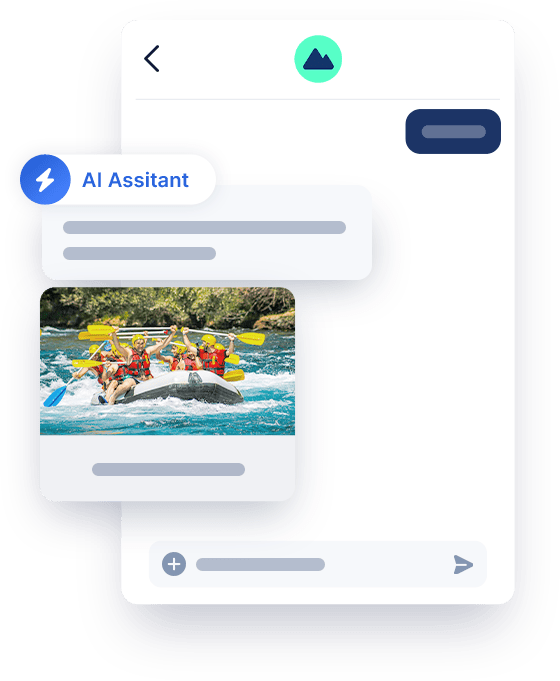11 Ways to Navigate High Call Volumes
There are some high call volume spikes you can prepare for—like the holidays or a new product launch—and some you can’t.
When you get a sudden spike in calls, it can feel like the sky is falling. Your support team is overwhelmed with calls and struggling not to let it show in customer interactions.
While there are some things you can do when you’re in the thick of it, planning now for those intermittent spikes is the best way to set your team up for success.
And it all comes down to doing more with less, so you can make the most of finite agent resources while improving customer service.
Let’s look at what you can do now and in the future to prepare for unexpectedly high call volumes.
1. Dive into the data.
Unexpected call volume spikes always seem out of the blue—but are they really? Besides the obvious and expected busy periods (the holidays, the January return season, and new product launches), other reasons could trigger your support center surge.
Look at your call center data to see if there’s a rhyme or reason to your surges. Do they follow the busy season? Do they happen after new influencer launches? Do they align with college semesters?
Even if you can’t find any hard-and-fast patterns, maybe the data can help you with scheduling.
2. Optimize customer service agents’ schedules.
There’s something to be said for strategic scheduling. Poor scheduling can make a normal call day feel like a torrent. Take a look at what time of day your call volume peaks, and pull agents from other shifts to cover it.
More than that, you can get more granular by scheduling agents based on their strengths and abilities.
Move agents with faster resolution times to the busiest part of your day, and put agents with a slower, more methodical approach during your off time.
You can also schedule agents based on their specialties. For instance, if you’re dealing with a high volume of returns, make sure your team members with the most experience doing returns are working.
3. Cross-train other staff.
A great short-term solution to call volume spikes is to have additional staff you can call on to help. Cross-training a few team members on customer service means they’ll be ready to go when you need them most.
Call volumes aside, things happen. A bug can work its way through your customer service team, hiring can take longer than expected, the works. Having staff you can call on to help goes a long way.
Additionally, cross-training staff from other teams can also help reduce customer service agents’ burnout. When employees constantly handle high volumes of calls, it can take a toll on their mental and physical well-being.
By rotating staff from other teams, you can ensure that customer service agents are not overworked and are able to maintain a healthy work-life balance.
4. Embrace asynchronous messaging.
Asynchronous messaging (sometimes called async messaging or asynchronous chat) allows customers to converse with brands as it is convenient for them. Think about text messaging. While you can have a live back-and-forth conversation, you can also send a message and receive a reply an hour or two later.
Asynchronous messaging lets customers respond at their leisure and gives your customer service agents some breathing room to answer questions. Since customer responses stagger, your customer service agents can manage conversations with multiple people—as many as 8 at one time. That’s something you can’t do with live support.
File this under the category of “not something you can implement when you’re in a pinch.”
While embracing asynchronous messaging enables your customer service agents to handle multiple conversations at once, you need a runway to implement and train your team on using it to the fullest. Managing asynchronous messaging also works best with a powerful conversational platform behind it, like Quiq.
5. Take advantage of predictive text.
Another advantage of adding messaging to your help center tech stack is the use of predictive text. If you can’t deflect calls enough to lighten your team’s load, then the best thing to do is make them more efficient.
A conversational platform with AI-enhancing capabilities can actually make your team faster. AI-powered snippets in Quiq’s platform, for example, can help predict responses and provide answers for agents to tweak, personalize, and send off. That way, instead of searching for the answers, customer service agents always have them at their fingertips.
6. Add call-to-text to your IVR.
There’s no doubt that phone conversations take more of your agents’ time than messaging. Although you can’t keep customers from making phone calls to your help center, you can encourage them to message.
Most customers hang up after being on hold for 90 seconds, so when your call center is slammed, your customer satisfaction rates can plummet. Instead, give them the option to take the conversation to messaging.
Call-to-text can work through SMS text messaging or WhatsApp. Customers who don’t want to wait to get live support can get their answers via messaging as they go about their day. It’ll give your call center some much-needed relief.
7. Outsource some of your calls.
When under pressure, you can always look for an outside team to pick up the slack temporarily.
Make sure you set them up for success by putting together your best practices, important product knowledge, and policies and procedures. While you may not have time to thoroughly train them in the short term, they can help in a pinch.
8. Implement a queue system.
Whether you stick with calls or add messaging to your customer service feature, implementing an automated (and intelligent) queue management system can manage high volumes.
Ideally, the system can let customers know how long they should expect to remain on hold and give them other options to contact customer service if they don’t want to wait. This can include call-to-text as we mentioned earlier, but it should also include options like receiving a callback or sending an email.
9. Make ai chatbots a part of your team.
Chatbots aren’t going to replace your team, but they can support it. If you’ve made the leap to messaging, leaning on AI-enhanced chatbots can lighten the load on your team. There are several ways chatbots can help you do more with less:
- Charge your chatbot with answering basic questions: When call volume is high, use your team to answer the more complex questions and have a chatbot answer the easy ones.
- Collect information upfront: Chatbots can help gather information and route calls to the right agent to cut down on service time.
- Walk customers through troubleshooting: If the reason for your call volume spike is a product issue, use chatbots to walk customers through the first few phases of troubleshooting. If the problem persists, then a customer service agent can pick up where the bot left off.
10. Proactively get ahead of problems.
Take care of issues before they reach your call center. While you can’t anticipate every problem and prevent people from calling altogether (nor should you), you can get ahead of issues.
Sometimes it’s as simple as putting your return policy in a more easily accessible place on your website. Or when a product issue arises, send emails and outbound text messages to address it before it blows up your call center.
Being upfront and transparent with customers will prevent a lot of anger and frustration before it gets to your call center.
11. Scale up when you need to.
As efficient as you are, there are times when you’ll need to scale up your help center quickly. If a volume spike turns into a sustained deluge, then it might be time to look at the budget and see if hiring additional support is feasible.
Manage high-volume calls with Quiq.
Predict high-volume call spikes when you can, and turn to Quiq when you can’t. Quiq’s Conversational AI platform can help you improve efficiency across the board—and especially during busy periods. Let agent overwhelm become a thing of the past and start improving your customer service strategy now.


